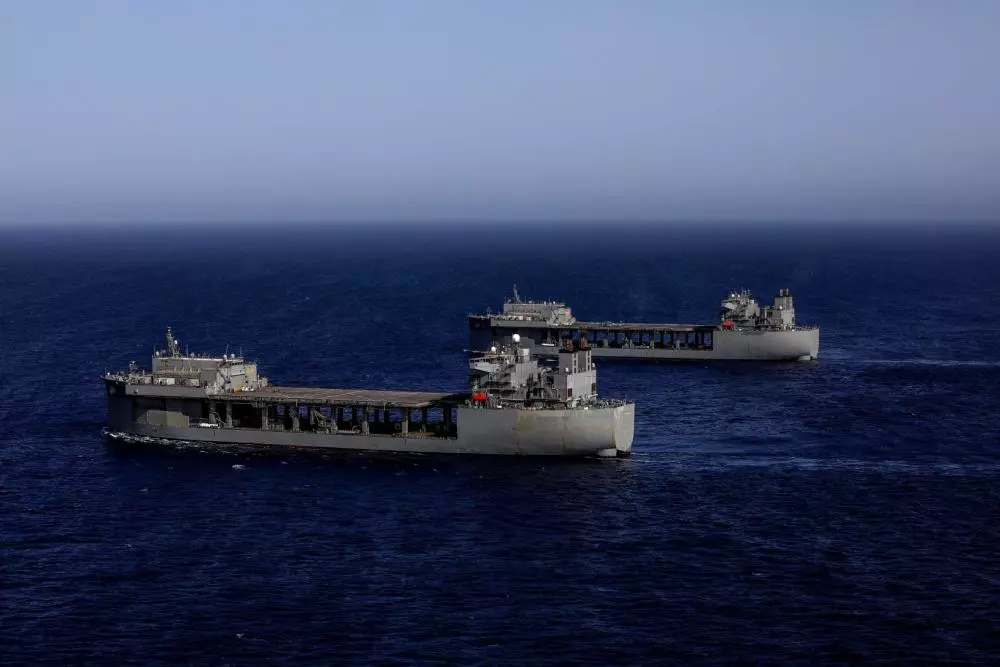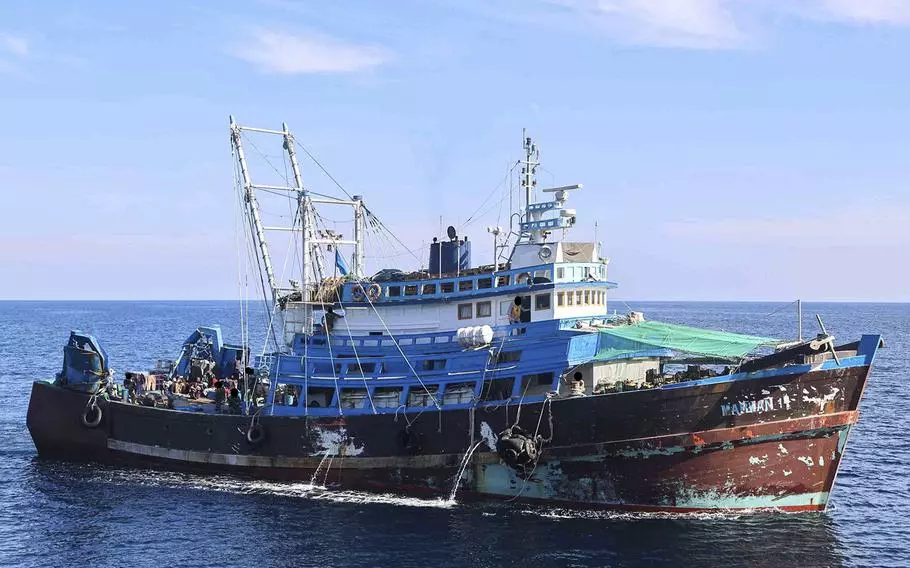On December 3, the U.S. Navy stopped a stateless fishing trawler in the Gulf of Oman and, when searching the vessel, uncovered a vast arms shipment that Tehran was sending to Houthi rebels in Yemen.
During the operation, the U.S. sailors seized over one million rounds of 7.62mm ammunition, 25,0000 rounds of 12.7mm ammunition (equivalent to U.S. caliber .50 ammo), 7,000 proximity fuses for rockets, and bags of propellant weighing more than 2,100 kgs (about 5,000 pounds) that can be used for rocket-propelled grenades. The shipment of illegal ammunition weighed a total of 50 tons.
U.S. Fifth Fleet sailors from the USS Lewis B. Puller (ESB 3) discovered the illicit cargo during a flag-verification boarding operation along a known smuggling route that Iran has used in the past to send aid to the Houthis, their proxies in the civil war in Yemen. The U.S. has charged that Iran is providing continued “unlawful transfer of lethal aid.”
“This significant interdiction clearly shows that Iran’s unlawful transfer of lethal aid and destabilizing behavior continues.” Vice Adm. Brad Cooper, commander of Naval Forces Central Command (NAVCENT) and Fiftth Fleet, said in a statement.

The supply, sale, or transfer of weapons either directly or indirectly to the Houthis in Yemen violates U.N. Security Council Resolution 2216 and international law.
About a month ago, the Fifth Fleet’s USS The Sullivans and the USCGC John Scheuerman stopped a different stateless fishing trawler that was delivering lethal aid from Iran to Yemen. That boarding verification operation yielded more than 70 tons of ammonium perchlorate, a powerful oxidizer commonly used to make explosives, rocket, and missile fuel. U.S. sailors also found more than 100 tons of urea fertilizer, a chemical compound that can be used either agriculturally or as an explosive precursor.
In the past year, the U.S. Fifth Fleet has maintained an increased presence in the region. This has led to the seizure of not only arms shipments but also illegal narcotics. Since 2020, naval forces have intercepted approximately $900 million worth of illicit narcotics moving between Yemen and Iran.
Related: America’s Kurdish partners are under attack by Iran and Turkey
The civil war in Yemen

The origins of the civil war in Yemen can be traced to the mid-2000s when the Ansar Allah, popularly known as the Houthis, were conducting a low-level insurgency against the government in the mountainous region that bordered Saudi Arabia.
A ceasefire was signed after the Saudis came to the aid of the Yemeni government in 2009, but the situation heated up in 2014 when the rebels captured the capital of Sanaa.
The Saudis established an eight-member coalition of Arab states (Egypt, Morocco, Jordan, Sudan, Kuwait, United Arab Emirates, Qatar, and Bahrain) to aid the Yemeni government.
The U.S. aided the Yemeni government and the Saudi coalition with logistical, intelligence, and air support.
Iran has denied using the Houthis as its proxies against its enemy, Saudi Arabia. Yet, the Islamic Revolutionary Guard Corps (IRGC) commander, Nasser Shabani, said to the Fars News Agency, the semi-official news agency of the Iranian government that “we” told Yemenis [Houthi rebels] to strike two Saudi oil tankers, and they did it.”
The Houthis receive training and support from the IRGC’s Quds Force which has also provided them with arms, ammunition, and, more recently, ballistic missiles and drones that are all manufactured in Iran.
Feature Image: The fishing trawler that carried more than 50 tons of ammunition rounds, fuses, and propellants for rockets when it was boarded in the Gulf of Oman. (U.S. Navy 5th Fleet)
Read more from Sandboxx News
- Sidewinder: The game-changing missile the Navy didn’t actually want
- Why is the military buying business jets?
- Does Iran have a stealth fighter? They wanted you to think so
- By using Iranian Shahed-136 drones is Russia admitting that its defense industry can’t keep up?
- Turkey considers a ground offensive in Syria as relations with the US worsen


